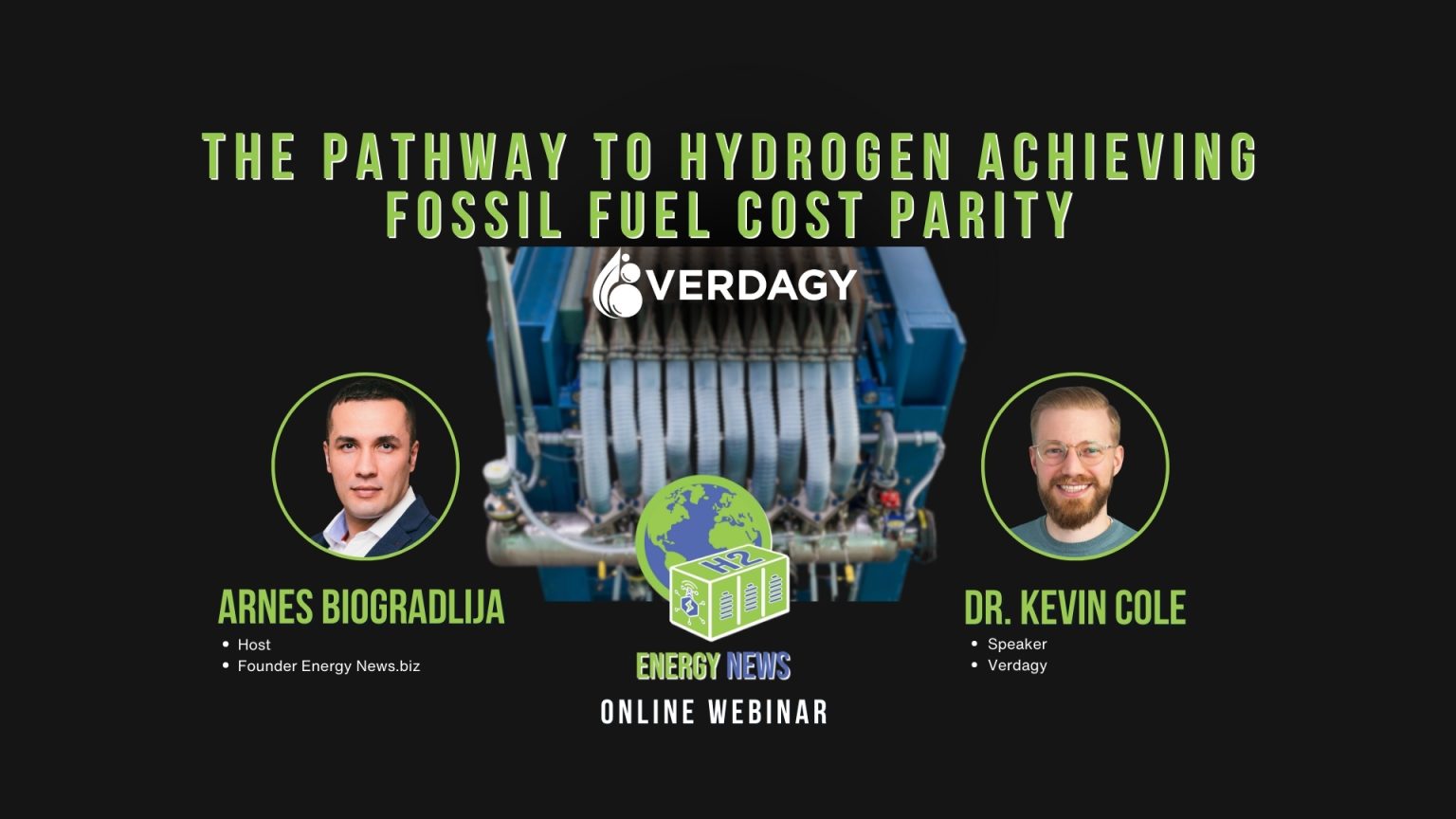As the global hydrogen economy gains momentum, a central question continues to shape the trajectory of investment and deployment: when—and how—can green hydrogen reach cost parity with fossil fuel-derived alternatives? According to Dr. Kevin Cole, Senior Scientist at Verdagy, the answer may lie in Dynamic Alkaline Water Electrolysis (AWE), a technology designed to operate flexibly in response to variable renewable energy inputs without sacrificing performance or stack longevity.
In a recent webinar based on the company’s white paper Dynamic Alkaline Water Electrolysis: The Pathway to Hydrogen Achieving Fossil Fuel Cost Parity, Dr. Cole outlined a techno-economic framework that positions Dynamic AWE as a competitive contender in the race to bring hydrogen production below $2 per kilogram—a widely cited benchmark for parity with fossil-based hydrogen in many industrial applications.
WATCH THE FULL WEBINAR
The core thesis of Dynamic AWE is its ability to ramp electrolyzer operations up or down quickly in response to fluctuating power supply, particularly from intermittent renewable sources like solar and wind. This flexibility is critical for reducing the levelized cost of hydrogen (LCOH), especially in markets with high volatility in electricity prices. Conventional alkaline systems, while proven and cost-effective, often lack dynamic response capabilities, limiting their ability to capitalize on low-cost electricity windows.
Verdagy claims that its Dynamic AWE systems can operate across a wide current density range without compromising system durability or hydrogen purity. This operational flexibility not only supports integration with real-time electricity markets but also extends asset utilization, a key driver in amortizing capital expenditures across a wider operating envelope.
Verdagy’s cost parity claim is grounded in modeling that assumes access to low-cost renewable power (sub-$20/MWh), high electrolyzer utilization rates, and stable component prices. According to Dr. Cole, under these conditions, Dynamic AWE systems could drive hydrogen production costs below $2/kg—competitive with steam methane reforming (SMR) in many regions, particularly when factoring in carbon pricing or emissions regulations.
Stay updated on the latest in energy! Follow us on LinkedIn, Facebook, and X for real-time news and insights. Don’t miss out on exclusive interviews and webinars—subscribe to our YouTube channel today! Join our community and be part of the conversation shaping the future of energy.





